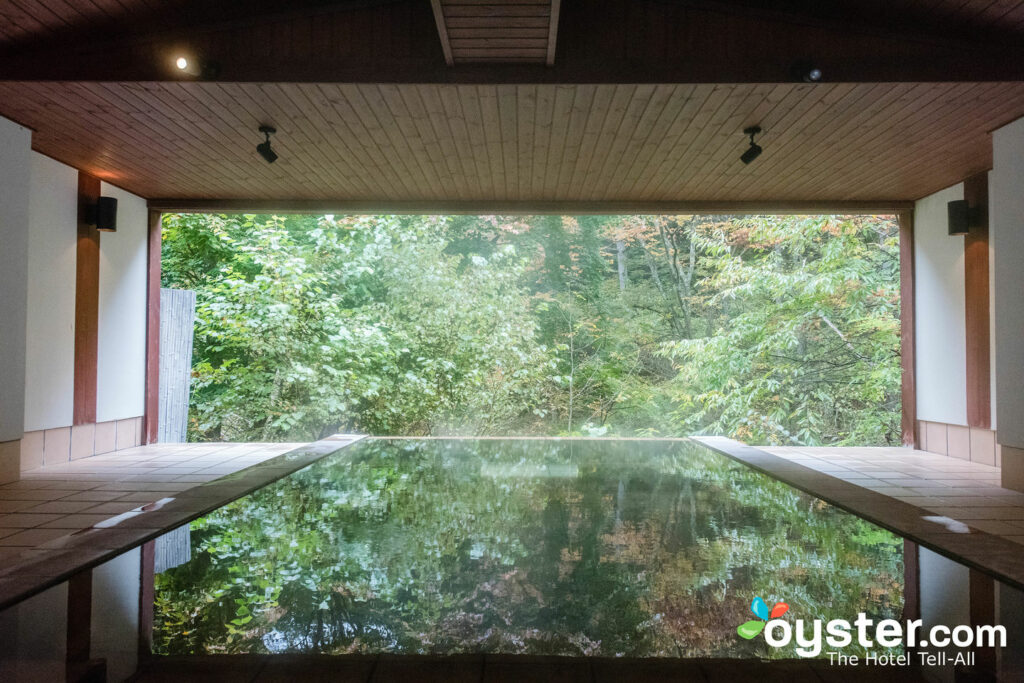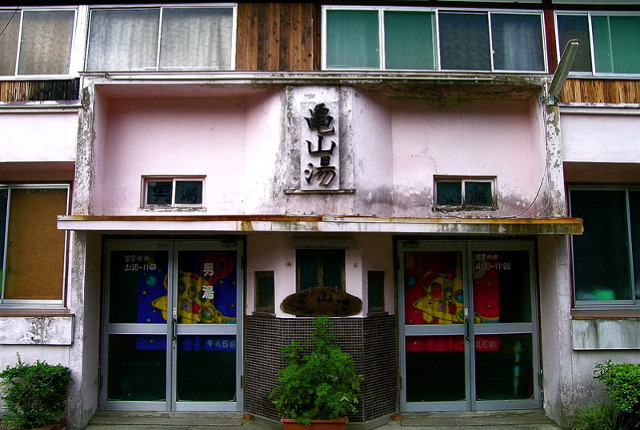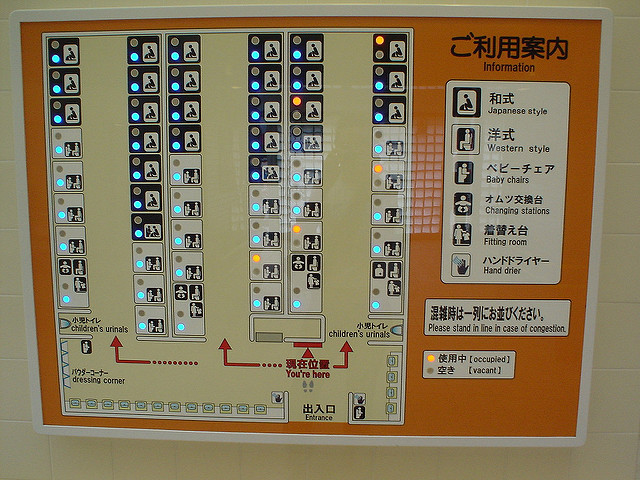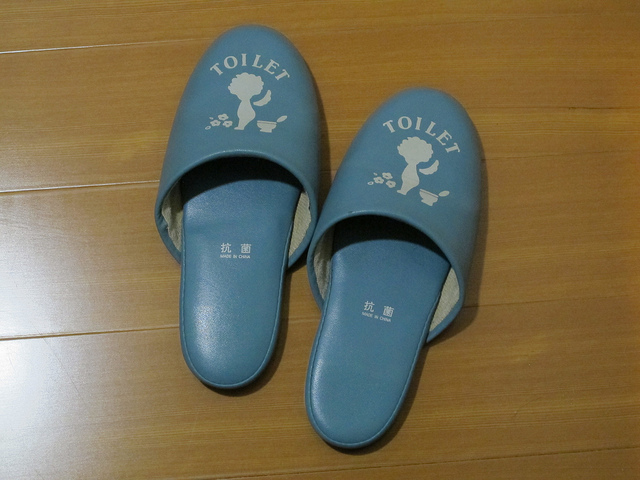
The dos and don'ts of daily interaction can be overwhelming on a first trip to Japan. Rules attached to maintaining order, tidiness, and hygiene are of the highest importance -- and there's a lot to remember when it comes to observing customs and etiquette basics. For example, it's important to point your street shoes toward the door after entering a building, accept a business card with two hands, and never, ever stick your chopsticks into a bowl of rice (this is only done at funerals). Don't forget to keep both feet on the ground when sitting and refrain from crossing your ankle over your knee. Avoid using the number four in anything you do. And before trying on clothing, expect to be handed a transparent sac that resembles a sheet of fabric softener to slip over your head.
When it comes to the most intimate practices, like bathing and bathroom etiquette, making an error can be truly embarrassing. Bathing is a public activity here, and it's done in the buff. And going to the bathroom in a private home requires a shoe change. As a tourist, you'll likely be given a pass on most things, as long as it's obvious that you're making an effort and are apologetic if you goof. Herewith, a primer on how to play it.
Sentō
These public bathhouses pre-date the Edo period (1603-1868) in modern-day Tokyo. While they’re dwindling in numbers, going to the sentō, a place where communities gather to bathe and socialize, is still very much a part of everyday life. The setup can vary slightly depending on the region, but all generally have the same layout, with a common entrance that sometimes has a lounge with a TV and vending machines with snacks, beer, and milk drinks. Baths are typically single-sex, though there can be mixed bathing for families, especially on weekends. Towels are brought or rented — you’ll get a small washcloth and a larger bath towel — and bath products are available for purchase or they’re supplied.
Farther back, there are separate changing rooms for men and women, with lockers or baskets for shoes and supplies. Beyond that, you’ll typically find a wet room with rows of washing stations. Some locker areas are connected to private gardens or koi ponds. Washing stations aren’t nearly as aesthetic, with utilitarian wooden or plastic stools, handheld showerheads, and buckets. This is where the actual bathing happens, as bath water is kept soap-free. It’s considered rude to wash while standing (too much splashing), so take a seat and lather up. Once finished, it’s polite to douse the stool with a bucket of hot water and push it in before the next person comes along.
Now for the soak. The only thing taken into the baths is the washcloth, but it should never touch the water. It’s either folded and placed on top of the head (men tend to do this more than ladies) or set beside the tub. Those with long hair are expected to tie it up, and dunking is frowned upon. Some more modern sentō have saunas and cold plunge pools.
A word on tattoos: they’re technically banned because of their association with yakuza gangs, but rules are more lenient with tourists, and as gangs have continuously decreased over the past decade. A small tattoo will probably be overlooked.
Onsen

At these often posh and tranquil mountain retreats, at least one bath is filled with water from a natural hot spring. The same rules and practices apply here as at the sentō, but the experience at an onsen is generally more luxurious and outdoorsy. Many are part of a ryokan (a traditional Japanese-style inn). Some are exclusive, romantic hideaways, and others are like the American version of a sprawling all-inclusive resort, with activities, water features, and even theme parks. Mega-onsens have restaurants, bars, karaoke, and game rooms. A Rotenburo is an outdoor onsen, and baths inside feel a lot like a spa. Body scrubs, called akasuri, and jetted tubs are usually part of the package. During warmer months in remote onsen towns, the atmosphere is so laid-back that it’s acceptable to walk around in your yukata, a light cotton kimono-like robe.
Public Bathrooms
To start, let’s learn some Japanese. The kanji for women looks like this: 女 and for men, like this: 男. There’s also a good chance that there will be an accompanying pictograph to guide you.
Here’s the good news: Japanese toilets are all totally private, whether they’re Western or traditional Japanese-style (read: squat). The type is also clearly labeled on the stall door — or on an elaborate toilet roadmap near the entrance — so you know what you’re getting into. You’ll find them everywhere, from chic establishments to train stations, with information on occupied stalls and special facilities, like children’s changing areas. There will also likely be another sign (again, a pictograph) on how and where to form an orderly line and the correct flow of traffic. Don’t think about cutting the line.
If confronted with using a squat toilet, face the hood with your back to the door, and do your best. How to use a modern Japanese washlet toilet (essentially, an electronic bidet with a dashboard of buttons for high-tech features) is a topic unto itself. For purposes of etiquette, the essentials: Don’t stand up while operating the bidet, as water can spew into the air, and there are buttons to mask noise and odor that you may wish to identify and deploy.
What you won’t always find is toilet paper. Traditionally, it wasn’t supplied in public bathrooms, and you may even encounter a toilet paper vending machine. So it’s a good idea to carry your own. Likewise, there may not be paper towels, which is when you’ll notice people pulling out personal tenugui, which are colorfully patterned hand towels. Pick one up for yourself, and a few extras, as they make great souvenirs.
Private Bathrooms
Of all the bathing- and bathroom-related etiquette in Japan, using private bathrooms — where you’re least likely to encounter other people — can be the most challenging and stressful. Why? Because it involves a coordinated orchestration of changing slippers, sometimes when you’re half asleep and in total darkness. Much like house slippers you put on when entering someone’s home or in a ryokan, there are bathroom slippers too, and they’re worn only in the bathroom. Likewise, house slippers are never brought into bathrooms.
Wear your house slippers in the hall to the bathroom. Hopefully, the person in there before you left them near the door and pointed toward the toilet so you can step in (it’s expected you’ll do the same when you’re finished). Kick off your house slippers outside and, without your feet touching the floor, slide into the bathroom set. They’ll probably be three sizes too small or large, so maneuvering won’t be the easiest. Employ your washlet toilet knowledge as per above. If you’d rather not touch the bathroom slippers with your hands (most people don’t), you’ll have to step out of them backward and into your house slippers, or master some fancy slipper-shuffling foot moves to get them in toilet-pointing position.
You’ll Also Like:
- 24 Things You Should Know Before Traveling to Japan
- 6 Must-Visit Hidden Gems in Japan
- 10 Things We Love About Japan
All products are independently selected by our writers and editors. If you buy something through our links, Oyster may earn an affiliate commission.






